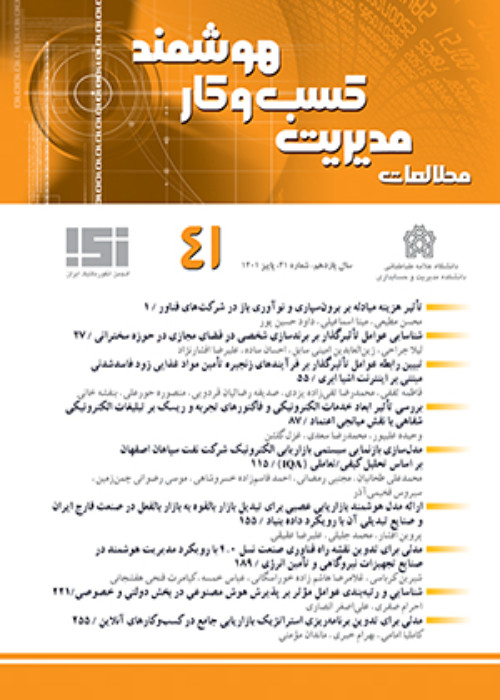Identifying Obstacles to Digital Transformation Using the Meta-Synthesis Method
Big data and digital technologies, such as artificial intelligence (AI), blockchain, the Internet of Things (IoT), and robotics, will transform businesses in many ways. This process of adapting to these changes is called digital transformation. Companies and policymakers in different countries are implementing various programs, strategies, and policies to achieve digital transformation. However, they face many challenges and obstacles that need to be identified and addressed. This research provides a comprehensive classification of the barriers to digital transformation using the meta-synthesis method including 38 selected articles.
The literature on this topic has proposed various classifications of the barriers to digital transformation. This research focuses on the barriers from the perspective of digital transformation management and excludes the studies that examine the barriers from a technical perspective. The literature on this topic can be divided into three main approaches: "examining the barriers to digital transformation across industries and companies", "innovation approach" and "barriers to organizational change".
Some of the barriers mentioned in the literature are:
Lack of standards, lack of legal basis for data use, integration with existing system environment, dependence on other technologies, and fear of transparency/acceptance (Vogelsang et al, 2019)
Law/standards, management, and workforce (Bailie & Chinn, 2018)
Strategy, business model, business processes, organizational structures, and organizational culture (Vukˇ si´, 2018)
The conflict between physical and digital systems, as well as the pervasive mindsets that are ingrained in the organization's culture (Nate & Erica, 2014).
Lack of guidance from the government and hence resistance to change; Changing the operating models requires replacing a large number of equipment and systems and involves significant capital; The interaction of different technologies may cause problems in a complex system; The adoption of new technologies requires a certain time for evaluation, and it takes time to adjust the strategy according to the new environment; Lack of overall planning and standardization (Lu et al, 2019).
This research is a descriptive-applied study that uses the meta-synthesis method. In this study, the seven-stage model of Sandusky and Barroso (2006) is applied. Based on the research objectives and questions, as well as the theoretical foundations related to the barriers to digital transformation, relevant articles were searched using the keywords in the national and international scientific databases. This search resulted in finding 173 articles related to the keywords. After identifying the articles, the models and concepts presented in them were coded. In this study, open, axial, and selective coding were performed. In the next step, the internal validity and reliability of the codings were checked.
As mentioned in the literature, the technological change in the digital field can be analyzed as a technological system and from the perspective of socio-technical transitions (Reinhardt, 2022). Different approaches for analyzing technological transitions are of interest in the literature. This study has chosen a multi-level perspective for this analysis. This perspective views the transition as a historical pattern that can be depicted in three different layers. According to this perspective, technology transition can be conceptualized as three nested levels: landscape, socio-technical regime, and niche.
Using this perspective, at the landscape level, the environment of a system is examined, and the two sub-categories of government and society are identified as barriers to digital transformation. Moreover, based on the systemic approach to the topic, the socio-technical regime, which is the system that governs the industry or the field studied in this study, is proposed. The basis of companies developing digital technologies should be analyzed and investigated according to the concept of barriers to digital transformation. In this thesis, this category is explained and the dimensions related to each category are discussed in detail.
Considering the scope of the study, this framework does not examine the internal relationships between the variables (sub-categories) under the categories. It seems that suggesting the relationship between sub-categories in the proposed framework can be a recommendation for future studies. Also, examining the solutions to overcome the barriers identified in a case study can be suggested as another recommendation for future studies.
- حق عضویت دریافتی صرف حمایت از نشریات عضو و نگهداری، تکمیل و توسعه مگیران میشود.
- پرداخت حق اشتراک و دانلود مقالات اجازه بازنشر آن در سایر رسانههای چاپی و دیجیتال را به کاربر نمیدهد.



